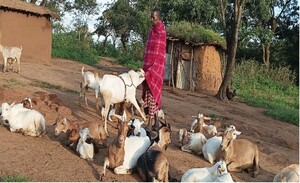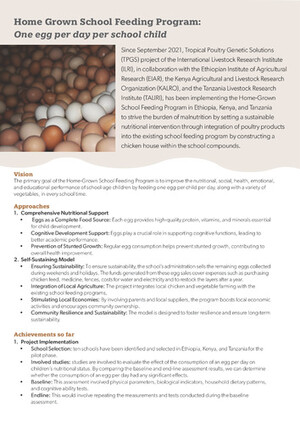
Genetic analysis of efficiency-related traits in Boer x Central Highland goats
Abstract
This study aimed to identify important non-genetic factors and estimate genetic parameters for efficiency-related traits in Boer x Central Highland goats. The genetic parameters were estimated using the Average Information Restricted Maximum Likelihood algorithm using the WOMBAT program fitting animal model. The least-squares means for growth efficiency from birth to 3 months (GE1), 3–6 months (GE2), 6–12 months (GE3), relative growth rate from birth to 3 months (RGR1), 3–6 months (RGR2) and 6–12 month (RGR3) were 294.0 ± 5.06, 36.6 ± 1.20, 44.9 ± 1.81, 1.46 ± 0.01, 0.32 ± 0.01 and 0.19 ± 0.01, respectively. Birth type, blood level, sex of the kid, and year of kidding had a sizable effect on efficiency-related traits. About 18, 3.0, 23, 20, and 12% of the phenotypic variation in GE2, GE3, RGR1, RGR2, and RGR3 was explained by the direct additive genetic effect. Except for RGR3, all investigated traits were under the influence of maternal genetic effect, and maternal heritability ranged from 0.09 to 0.17. The total heritability estimate depicts that slow genetic progress would be expected from selection. Nevertheless, even with this level of heritability, selection for efficiency-related traits would improve the efficiency of chevon production as these traits are economically important traits. Nearly six-months of age was when farmers sold Boer crossbred goats. Therefore, improving the growth efficiency till the marketing age (GE2) in such a scenario could increase the production efficiency.
Citation
Tesema, Z., Alemayehu, K., Getachew, T., Kebede, D., Tilahun, M., Deribe, B., Lakew, M., Alebachew, G.W., Taye, M. and Gizaw, S. 2024. Genetic analysis of efficiency-related traits in Boer x Central Highland goats. PLOS ONE 19(7): e0305749.










